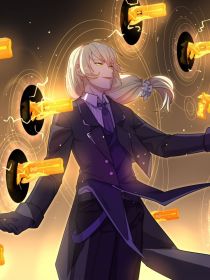The Hobbit L 01
Identification and Distinguishment of Identities Utilized in The Hobbit
In the 1937 published juvenile fantasy novel The Hobbit, author J. R. R. Tolkien sculpted unique identities in each of the 15 crucial characters. Bilbo Baggins commenced his first adventure in his life along with the dwarves under the attentive supervision of Gandalf. Overviewing the entire plot, it can be is perceived as complicated that every character in the novel has distinctions on their personalities, characteristics, and appearances. This essay will demonstrate the method utilized by the author to organize the definition of the identities to the characters established, content with the application of family inheritance, personal power, and semblances.
As the majority of among the characters, author Tolkien sketchedaccumulated Bilbo Baggins’s identity cautiously according to his family backdrop. The ancestors of Bilbo were from the surname Took: “Belladonna Took, one of the three remarkable daughters of the Old Took” (Tolkien, 2). This quote reveals e indication informs that parts of Bilbo’s identityies are based on his family and blood, by providing a hint that he may have inherited some personality traits from the ancestors. “Oonce in a while members of the Took-clan would go and have adventures” (Tolkien, 2). This statement permeated as a reflection that Bilbo is that kind of person who originally had the intention to adventure, however the peaceful lifestyle “hush it up” (Tolkien, 3). The depiction in the further illustrated chapters certificated this personality by arousing his curiosity on the adventure, the comfortable emotion along the way, and the short adjustment in the elves'in elves’ house. Overviewing the history of all mankind, the obedience to legislation and to legally reserve everything legally are always considered as an indication of merit and virtue;. Thus, readers can infer that there is no dichotomy for him to be defined in a solidified characteristic. Thus, the author establishes his complicated identity from his family members indirectly, by providing hints to further imply the readers as an anaphora tying connect together the entire plot around Bilbo. together.
Fundamentally, Gandalf is perceived as a powerful wizard and is adored by the dwarves. As the plot and conflict developed, the author made us skip and ignore Gandalf for reasons in chapter Two and Three without beingany vapid. However, he promptly returned to the group promptly to rescue them from being tortured by the trolls. Moreover, he stimulated the greed and suspicion between the trolls by imitating the voice of trolls in order to avoid the face-to-face conflict (Tolkien, 32). The author utilized the theme power of language to further develop the identity of Gandalf. Therefore, he created such a formidable contradictioncontradistinction as an indication to emphasize his significance and reinforced his powerful capability to demonstrate the identity of characters.
Although the dwarves are duplicative of their appearances and personalities, they are distinctive on clothes. The depiction from author Tolkien was concentrated on their particular garment: the hood. In chapter one, the unexpected party, Bilbo enthusiastically treated these unexpected guests arriving at his cozy hobbit-hole (Tolkien, 4). However, he never thought that there were 13 dwarves in total. One of their commonalities is that they all hang their hoods on the clothes stands (Tolkien, 12). For instance, the first dwarves invited was Dwalin; he, he appeared in a dark-green hood; Barlin was in a scarlet hood. Conclusively, Tolkien established the method to distinguish the appearance of dwarves to enhance their identity.
Ultimately, in the novel The Hobbit, the instruments that the author utilized to shapelocate the identity of characters are household inheritance, strength and power, and semblance. Connected to some other elements of the novel, the household inheritance symbolizes the theme hospitality, the personal power is related to the power of language and heroism, lastly, the semblance reflects the personality of the dwarves indirectly. The superior utilization of contrast, implicating, and anaphora combined into this novel, informs the reader of the identity of each character’s identity.
Bibliography
Tolkien, J. R. R., The Hobbit, 21 September 1937
“Quoggy”, The Hobbit: Book and Film Differences, http://hobbitdifferences.blogspot.com/2013/04/the-dwarves-appearances.html, Monday, April 1, 2013.
Island提示您:看后求收藏(同创文学网http://www.tcwxx.com),接着再看更方便。
相关小说
- 原神:在下奥托,有何贵干
- 简介:我,奥托·阿波卡利斯,前任天命大主教,最终我还是拯救了我的卡蓬,希望她能在那个世界好好活下去吧,但是让我万万没想到的是,我竟然穿越了,这个世界非常的神奇,因为在我的眼中,这个世界来充斥着七种元素现在,我的名字叫神里绫人我终将会把天理拉下神坛,回到我原来的世界……
- 0.5万字2年前
- 白玉兰是最温柔的花
- 0.9万字2年前
- 奥特晒图室
- 简介:光之国奥特曼们的搞笑发图日常。
- 0.4万字2年前
- 奶希语录铺
- 简介:❤️欢迎来到奶希语录铺❤️✨这里有许许多多的经典语录,有一些文学作品中的好句,也有一些热门电视剧的经典台词。写作时没有头绪的话,就来看看吧!✨这里的语句都是作者收集到的哦✨会不定期更新的✨有分类哦✨收藏一下吧!*********先随便来个几句看看:1.我的命是昙儿给的,余生为她而活,四界容她我便拱手作罢,若不容她我对抗天下!2、深夜执伞相对,只为伊人清名。3、泱泱大国的殊荣,早已化为一团梦影。4、在我熄灭之前,能够照亮你一点,就是我所能做的了。5、发光不是太阳的权利,你也可以。
- 0.4万字2年前
- 突发奇想
- 简介:故事小段子。内容多样简短。如有缺点,积极建议!
- 0.3万字2年前
- 零零散散故事
- 简介://这里阿黎,请多多关照
- 0.3万字2年前





